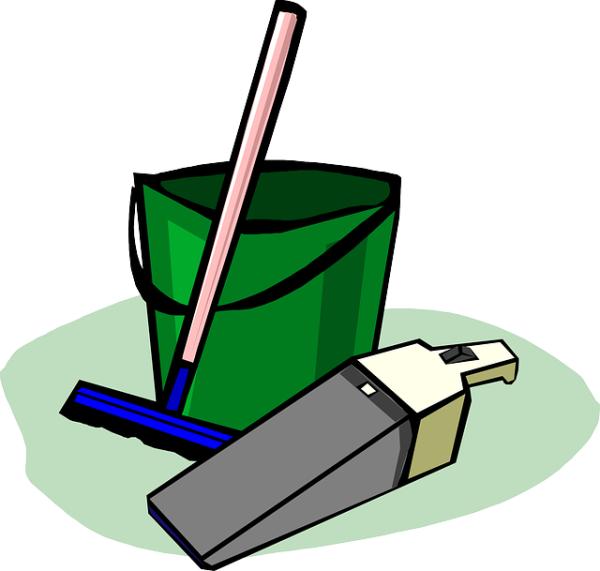Infants and toddlers spend 80-90% of their time indoors. They are “especially vulnerable because of their increased respiratory rate and proximity to the ground, which increases gaseous and dermal exposures” to air pollution. When this vulnerability is coupled with a rising rate of childhood asthma, it raises concerns about environmental exposures. Asthma is a chronic inflammatory response involving what seems to be an exaggerated response by the immunoglobin IgE to many environmental agents or allergens. At best we know, childhood asthma is a combination of a genetic predisposition and environmental response.
The researchers made use of an ongoing longitudinal prospective evaluation of a birth cohort of Canadian infants assessed quarterly from their mother's second trimester until the age of 3. Roughly two-thirds of the participants had sufficient data and were eligible for the study, 2022 children. Parents were surveyed on the cleaning products and their use when the children were 3 months old, and their health outcomes were tracked to age 3. 65% were Caucasian, 76% were not exposed to secondhand smoke, and 65% had no parental history of asthma. 57% of the homes had pets, and 42% visible mold.
Epidemiologic studies make use of three components; an exposure or dosage variable, a bio-plausible connection between the exposure and a health outcome, and the measured health outcome itself. Before presenting their findings, it is instructive to understand how outcome and exposure were measured; because their exactitude determines how much weight we should put into the conclusions.
Outcomes
Making a diagnosis of asthma in a 3-year old is challenging, so the researchers included several related measures. Atopy is the genetic tendency to develop allergic reactions, think of it as your sensitivity, and was measured with skin testing of 13 inhalants and 4 food allergens. Wheezing, the result of IgE release reflects the spasm of the airways; it is a whistling sound. Recurrence was defined as two or more episodes noted by parents or physicians within 12 months. The combination of the wheezing and atopy is a predictor of the later development of childhood asthma; and of course, some children are diagnosed as having asthma after clinical assessment. From an outcome point of view, we have one hard marker, the clinical diagnosis of asthma, and three biomarkers of what might become asthma, atopy, wheezing, and the combination of the two.
Exposure/Dosage
The measure of air pollution, the exposure variable, was the use of a range of household products. The researchers defined a frequency of use score (FUS) as the frequency of use of household cleaning products. They did not attempt to categorize them on the presence of volatile chemicals or other measures. Oven cleaner was treated the same as hand dishwashing detergent in terms of its environmental effects. The most frequently used products were hand dishwashing detergents, dishwasher detergent, multi-surface cleaners, and scented laundry detergent.
Results
For the entire cohort, 14% had atopy, 8% had a recurrent wheeze, 2% a combination of those two, and 6% had been diagnosed with asthma. When comparing the FUS, that frequency of household cleaner use, for the interquartile range, the middle range between 25 and 75% of usage researchers found a 35% increase in asthma or recurrent wheezing and a 49% increase in children with a diagnosis of asthma. But in the same interval atopy, the “genetic” component, increased by only 14%; suggesting that increased exposure to indoor air pollutants does not alter your genetic disposition, but increases your risk of developing asthma. The risk of these outcomes was higher for “frequent users of liquid or solid air fresheners, spray air fresheners, plug-in deodorizers, dusting sprays, antimicrobial hand sanitizers, and oven cleaners.”
Before running to the cabinets to rid your home of these products consider several study limitations, most of which impact exposure. The presence of volatile agents and other chemicals in these products was not characterized, nor do we have any data on their persistence in the environment. [1] More importantly, there is no data on where the children were when these products were being used – a determination that has a significant impact on their exposure and the “dose” they received. Does the use of the dishwasher pollute the air in a child's bedroom one hundred feet and a door away? We know little about how much air "pollution" is present, we know a lot more about how often they cleaned up. It is difficult to draw an association with household cleaner use and asthma, let alone a causal pathway.
The only finding we might consider to be demonstrated is the absence of an association between cleaning products and atopy. And this replicates previous studies, exposure to cleaning products does not increase our sensitivity. We have bio-plausibility for adult asthma, where volatiles in cleaning products may impact respiratory epithelium from chronic exposure. Still, children are not small adults, and no data is showing the same response in children.
If you consider what the study actually measured, how often we use cleaning products, then you may want to consider our old friend, the hygiene hypothesis. Perhaps we are cleaning so much that we deprive our immune system of some needed stimuli? You may also ask yourself why we use so many agents to “freshen” the air.
[1] Recent studies suggest that household cleaners have variable persistance indoors, based upon air exchange, as well as furniture, carpets, drapes, even counters.
Source: Association of use of cleaning products with respiratory health in a Canadian birth cohort CMAJ DOI: 10.1503/cmaj.190819




